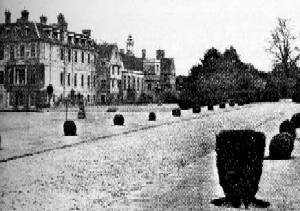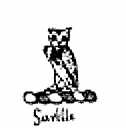Rufford Abbey and the Savile Family
See also Rufford. Rugford on the River Maun 1677

Rufford Abbey was a Cistercian house, in honour of the Virgin Mary, founded by Gilbert de Gant, Earl of Lincoln,nephew to the Conqueror, in 1146. Situated on the eastern edge of Sherwood Forest between Newark and Mansfield, Nottinghamshire, the community firstly, a colony of monks whom he brought from the abbey of Rievaulx, in Yorkshire, built up estates both locally and farther afield and ultimately owned some fourteen granges in the parishes around Rufford as well as in north Lincolnshire and the Derbyshire Peak District.
Following its dissolution in 1537 the abbey and its estates were granted Sir John Markham, for 21 years, afterwards, with the manor of Rotherham, which had previously belonged to the Abbey, and with much other property, he gave it to George Talbot, fourth Earl of Shrewsbury , in exchange for many large estates in Ireland, and in consideration of the prompt measures he adopted to suppress the rebellion in the north, known as the Pilgrimage of Grace
George Talbot, 4th Earl of Shrewsbury, whose family subsequently converted part of the abbey buildings into a small country house and demolished the remainder. Rufford became an occasional residence of this noble family, and it was here that Bess of Hardwick , arranged a hasty marriage between her daughter Elizabeth and Charles Stuart, younger brother of Darnley, the father of James 1st.
Mary, the wife of Gilbert, Earl of Shrewsbury and daughter of Bess of Hardwick, resided at Rufford in her widowhood, and the estate passed into that family by the marriage of her sister-in-law, Lady Mary Talbot, with Sir George Savile, of Barrowby, Lincolnshire. Sir George was succeeded by his grandson of the same name, his eldest son, Sir George, who married Anne, daughter of Sir William Wentworth, of Wentworth Woodhouse, and sister to the first Earl of Strafford, having died before him. Sir George Savile, second Baronet, died unmarried in his minority, and was succeeded by his brother, Sir William Savile, the royalist general commander, who married Anne, daughter of Thomas, Lord Keeper Coventry. This lady was noted for her courage and resolution during the civil wars, especially at the siege of Sheffield Castle, where she remained for security after her husband’s death, which had taken place six months before the siege.



 Notable owners were Sir George Savile, 8th bart. (1726-1784) who was a highly respected MP for Yorkshire and John Lumley Savile, the 8th Earl of Scarbrough (1788-1856).
Notable owners were Sir George Savile, 8th bart. (1726-1784) who was a highly respected MP for Yorkshire and John Lumley Savile, the 8th Earl of Scarbrough (1788-1856).